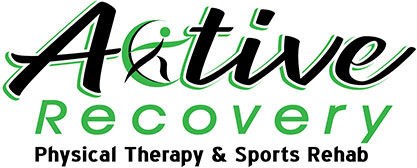How Can We Help?
Did you know that physical therapists are doctoral-trained specialists in human anatomy, movement, and functional performance? We are undoubtedly biased, but there’s no denying we are a great first stop in addressing any and all of your musculoskeletal complaints. Here’s some information about the types of conditions we can help you with…
*Please note, the following information is not intended to replace formal medical advice or to be prescriptive in diagnosing or treating your concerns. The intention is to provide you with a very baseline understanding of the types of conditions physical therapy can treat.
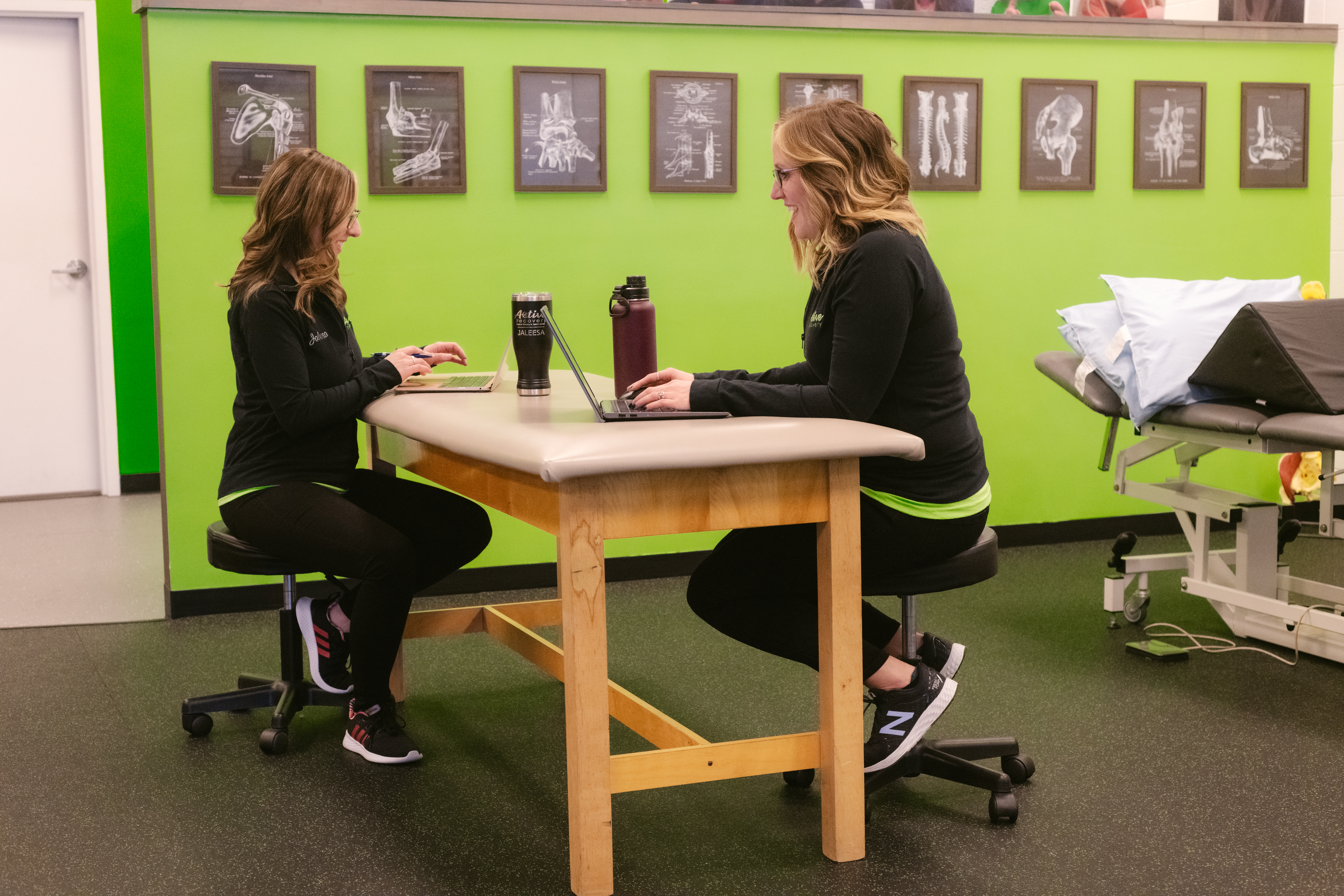
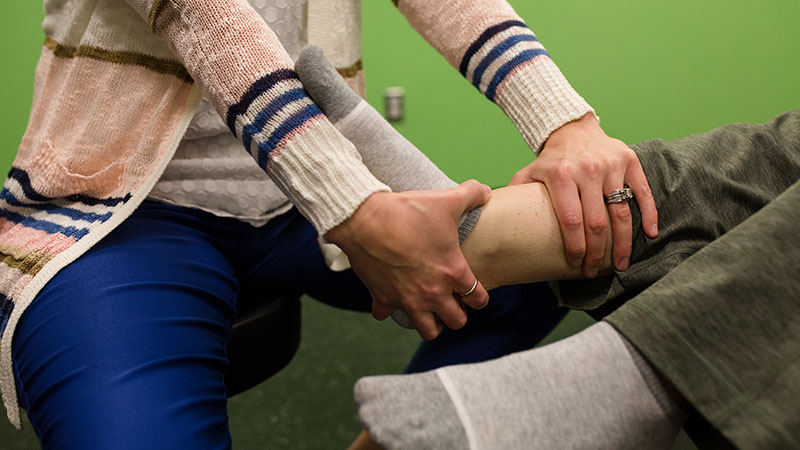
Ankle Pain
My ankle is bothering me, what’s wrong?
An ankle sprain is one of the most common sources of ankle pain. Unfortunately, a lot of people have experienced this injury at some point in their life, and once these structures are disrupted, they are more susceptible to repeated injury, pain, and dysfunction.
The most common type of ankle injury is a lateral sprain, where the ligaments on the lateral, or outer, the portion of the ankle are stretched. Less common is a medial, or inner, sprain. Sprains are also graded in severity from grade 1 (stretching or slight tearing) to grade 3 (complete rupture).
A physical therapy assessment will look at your available strength, motion, and gait quality to determine the level of sprain and to implement a program to improve these factors, along with reduction in pain and swelling. As you move through the phases of rehab, higher-level training will focus on balance, proprioception, and coordination, as well as a return to higher-level activity, such as work or sport-specific tasks.
Common sources of ankle pain:
- Achilles tendinitis or tear
- Ankle sprain
- Fracture
- Osteoarthritis
- Plantar fasciitis
- Tendinitis
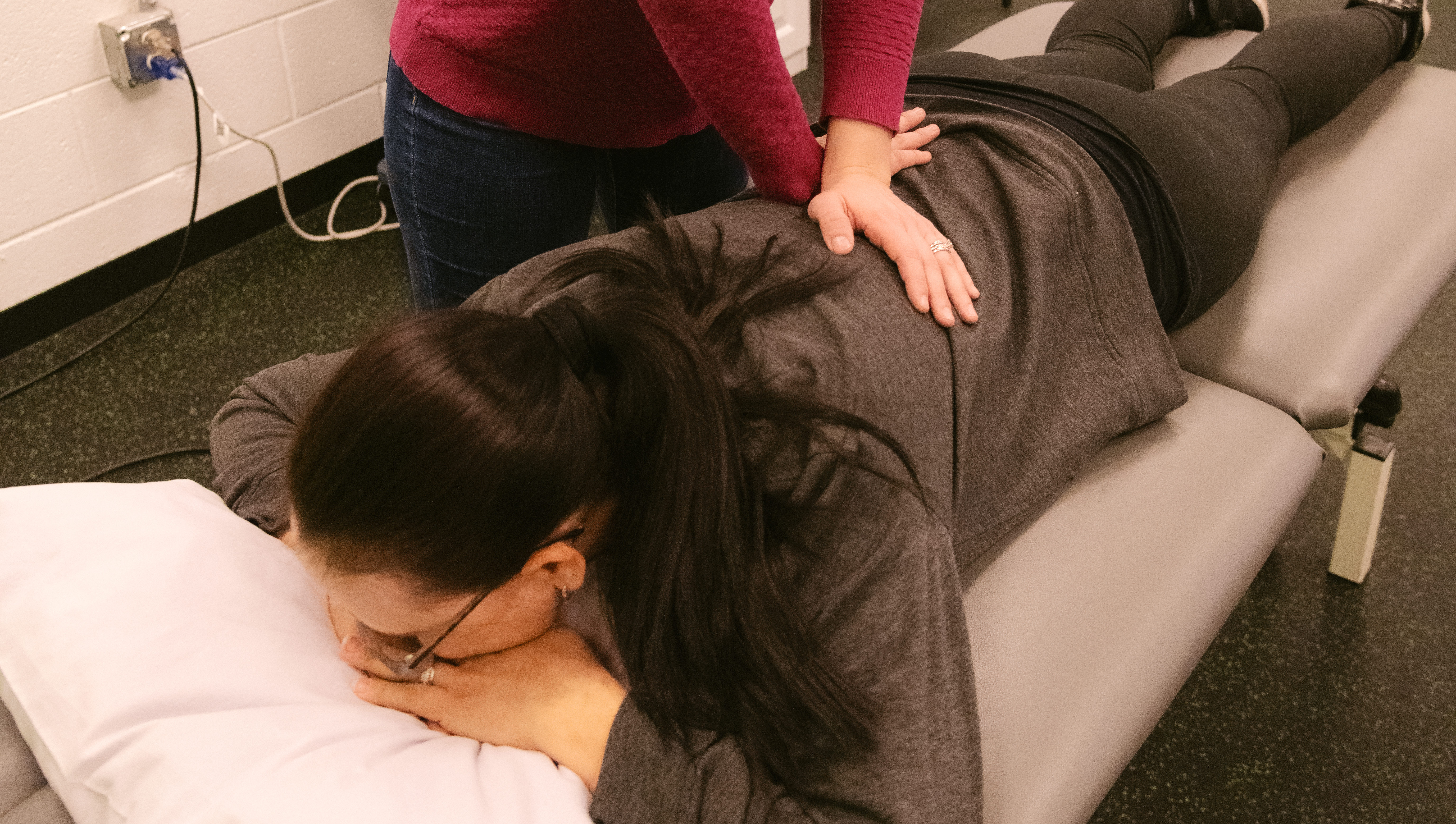
Back Pain
Why does my back hurt?
Back pain is one of the most common injuries, affecting people of all ages and for a variety of reasons. The likelihood of experiencing back pain also increases with age. Back pain can lead to poor sleep, work performance, and tolerance for normal daily activities.
There are many structures in your back that can produce pain, such as spinal joints, discs, ligaments, and muscles that aid instability of the region. Acute injury or chronic dysfunction of these structures can alter movement patterns and lead to compensations, where less effective muscles are straining to do the work.
A physical therapy evaluation will assess your range of motion, flexibility, strength, and tolerance for activity, such as squatting, bending, and changing position. Pain reduction techniques as well as strengthening and training in more efficient movement patterns are good symptom reducers, allowing you to return to the activities you love.
Common sources of back pain:
- Disc herniation or degeneration
- Ergonomics or poor posture
- Fracture
- Muscle strain
- Osteoarthritis
- Osteoporosis
- Poor mechanics
- Sciatica
- Weakness
* Please note, seek emergency medical care if you experience neurologic symptoms, including bowel and bladder changes (loss of continence) and numbness/change in sensation in the saddle area, including the genitals, anus, buttocks, or inner thighs.
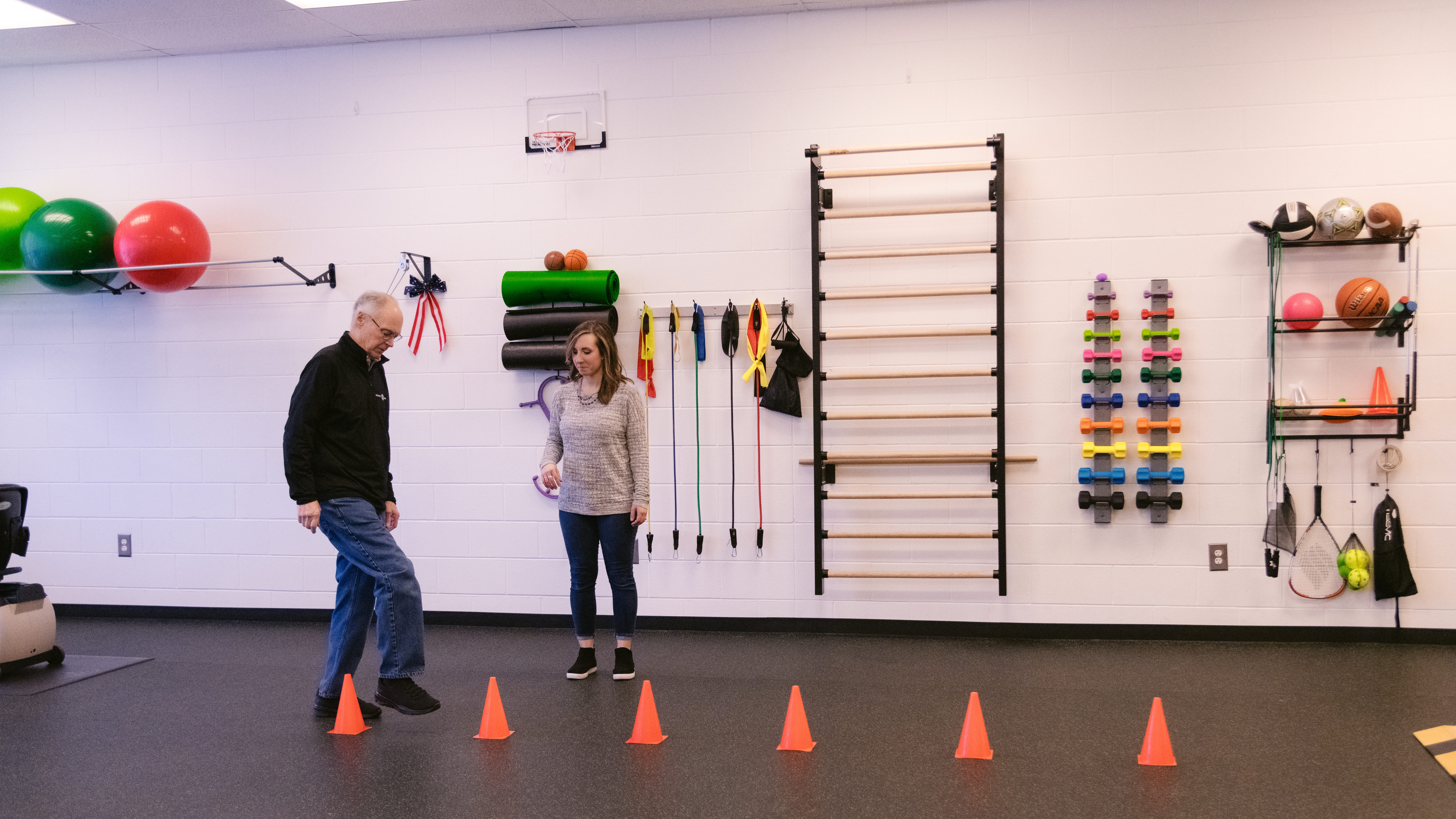
Balance Dysfunction
Why am I so unsteady?
There are many reasons that you may feel a little unsteady on your feet. Your balance relies on the coordination of three systems – proprioception (your sense of touch and where your body is in space), vision, and your vestibular system (located in your inner ear). If these three systems are in disagreement, your balance will be affected, causing you to feel unsteady.
A physical therapy evaluation will assess the coordination of these three systems, identifying potential causes and contributing factors. Based on these findings, a personalized exercise program will include strategies to train your intact systems, to increase coordination of the systems, and to increase general strength and endurance.
Common sources of balance dysfunction:
- Associated changes with aging, including loss of sensation and vision changes
- Concussion
- Loss of sensation, including forms of neuropathy
- Medication side effects
- Post-injury due to poor movement patterns and weakness
- Post-op joint replacement
- Stroke
- Weakness or deconditioning
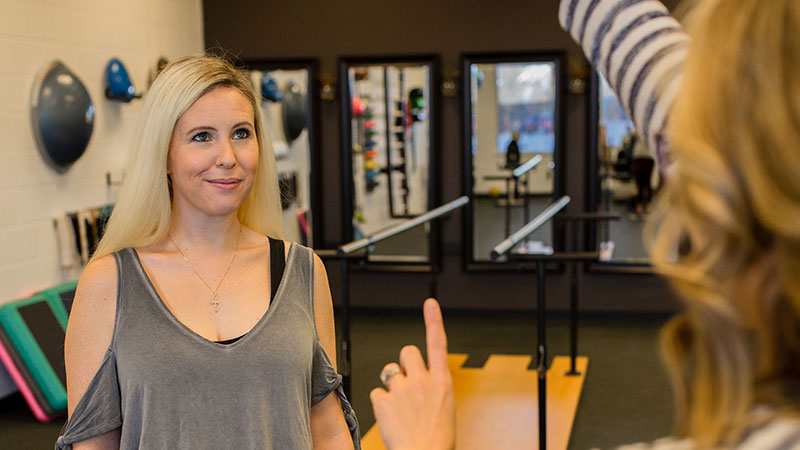
Concussion
When should I be concerned about a blow to the head?
It’s important to note that not every blow to the head is a concussion. However, it’s also very important to understand that proper concussion management is imperative to properly and safely resolve symptoms and potential deficits associated with a concussion.
The acute management phase following a concussion is important, but it’s also crucial to recognize that the duration of your deficits or symptoms is unique to you. Post-concussion syndrome symptoms can persist for a year or more following your injury. It’s important to listen to your body and to seek out care as needed to try to resolve and manage your symptoms as effectively as possible.
If you haven’t been referred to Physical Therapy following a concussion, give us a call or speak to your doctor today regarding your ongoing symptom concerns.
Common causes for concussion:
- Injury or fall resulting in blow to the head or whiplash
- Motor vehicle accident
- Sports or other high-velocity activity
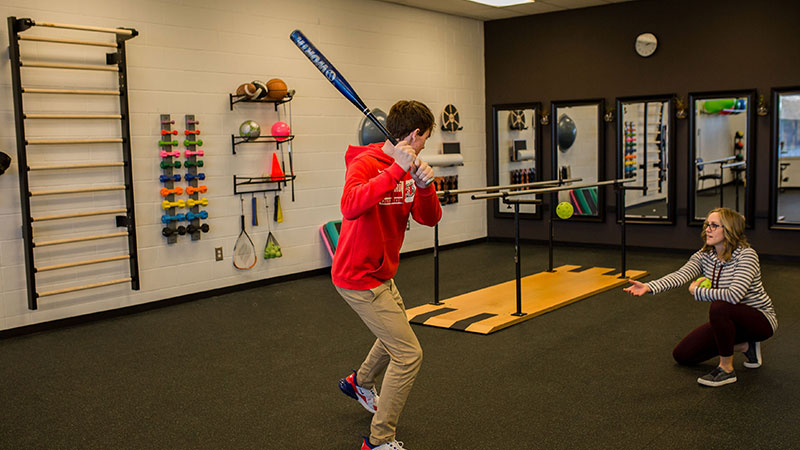
Elbow Pain
Why does my elbow hurt?
You may think the elbow is a relatively simple joint. I mean, it can only move in two directions, so how much trouble could it really get into? Unfortunately, if you’ve had elbow pain, you know it’s not quite that simple. There are many muscle groups that cross the joint, helping to move your shoulder, wrist, or to rotate your forearm, and many nerves that have to make their way past the elbow to get to the wrist and hand.
Elbow pain can be common in throwing athletes and workers, due to repetitive motion or sustained positioning. A physical therapy evaluation can determine where your symptoms are coming from, be it tightness, muscle imbalance, or poor mechanics. Interventions, such as taping, raking, and form modifications can be very effective in reducing pain, restoring function, and getting you back to your normal activities.
Common sources of elbow pain:
- Bursitis
- Carpal tunnel syndrome
- Lateral epicondylitis (tennis elbow)
- Medial epicondylitis (golfer’s elbow)
- Repeated movement
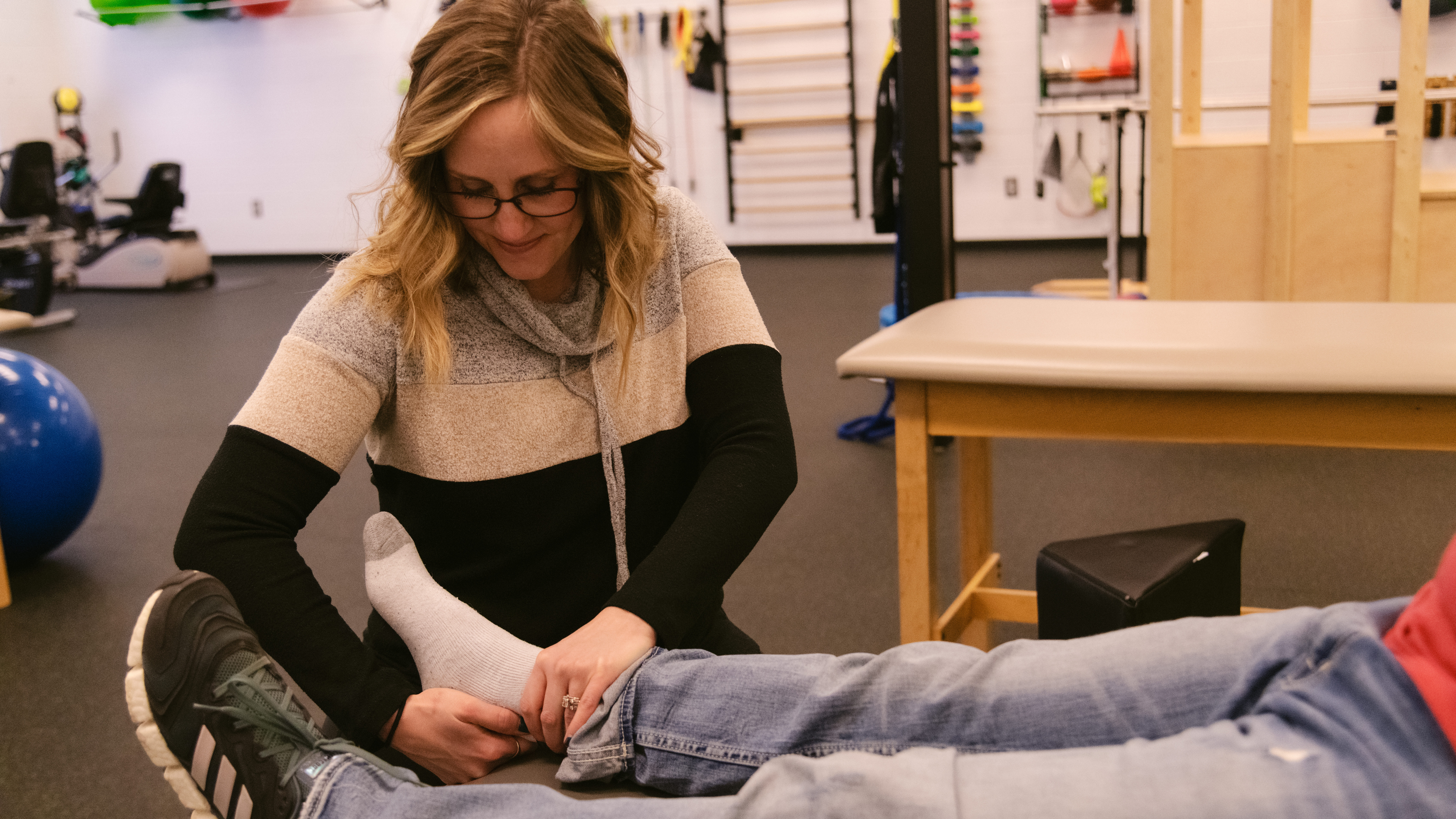
Foot Pain
What is causing my foot to hurt?
Did you know that each foot is made up of 26 bones, 30 joints, and more than 100 muscles, tendons, and ligaments? You probably don’t worry too much about your feet until they start to hurt. Only then do you realize just how important they are in getting from point A to point B.
A physical therapy evaluation will assess the structure of your feet to determine where your issues are stemming from, identifying any weakness or joint mobility problems. From there, we’ll develop a personalized program to get you back on your feet (see what we did there) with less pain.
Common sources of foot pain:
- Achilles tendinitis
- Bone spur
- Bunion
- Osteoarthritis
- Plantar fasciitis
- Stress fracture
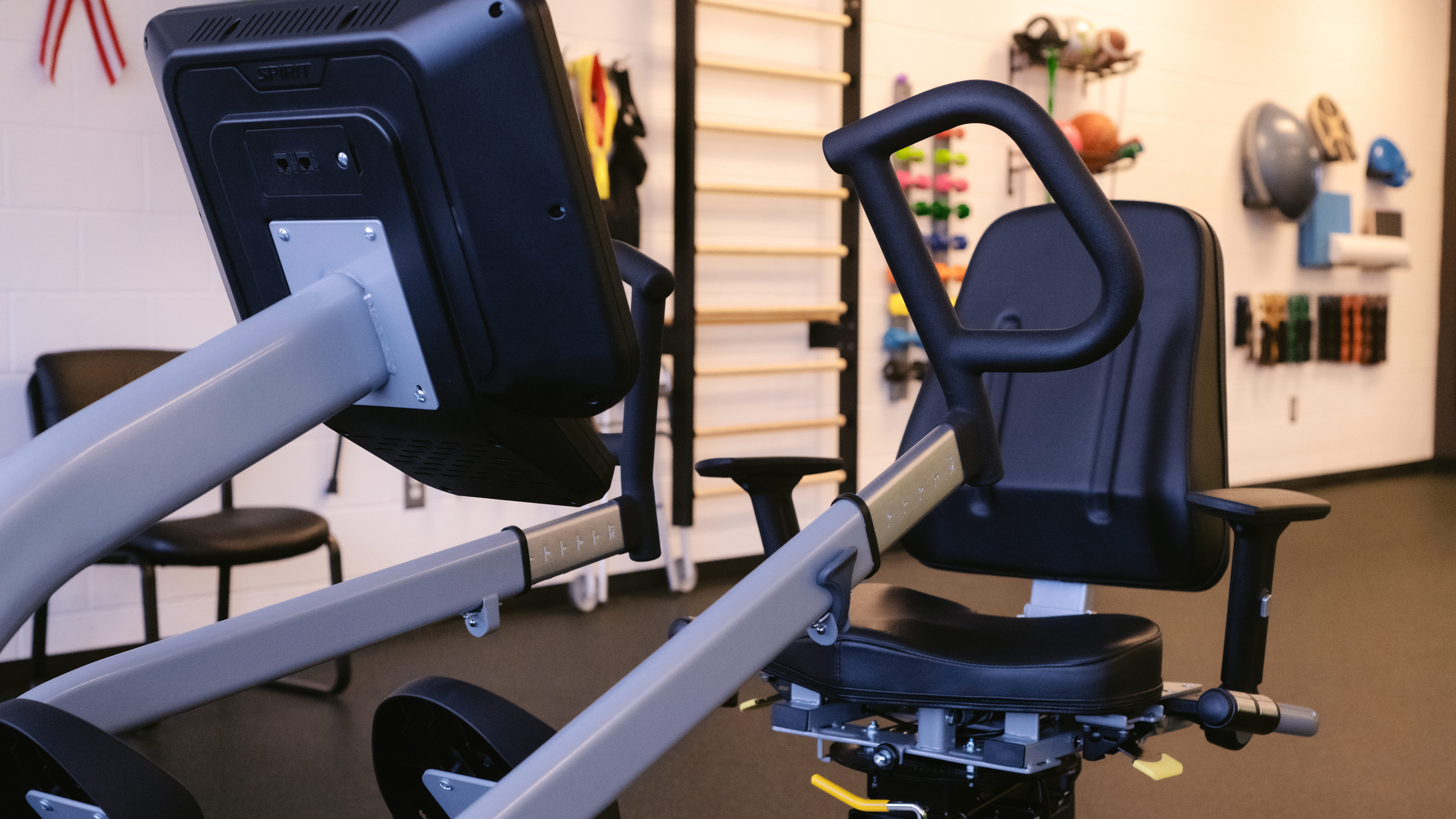
General Deconditioning
I just can’t do the things I used to.
Deconditioning can be a very frustrating phenomenon. You have a list of things to do, you used to be able to get them done in less time, and you just can’t seem to keep up anymore. Deconditioning can include losses in strength, balance, gait speed, and endurance. It can be the result of normal aging (although much of that can be reduced by upping your physical activity) or following injury or illness.
Understandably, there is a high correlation between physical and emotional wellness. As you are trying to adapt to your “new normal,” it can be frustrating to create new methods or strategies for accomplishing tasks. Our goal at Active Recovery is to help you GET ACTIVE by implementing a good wellness program and providing you with the tools, resources, and community you need to STAY ACTIVE.
Common causes of general deconditioning:
- Aging
- Cancer and associated treatments
- Decreased physical activity
- History of falls
- Injury or illness limiting activity
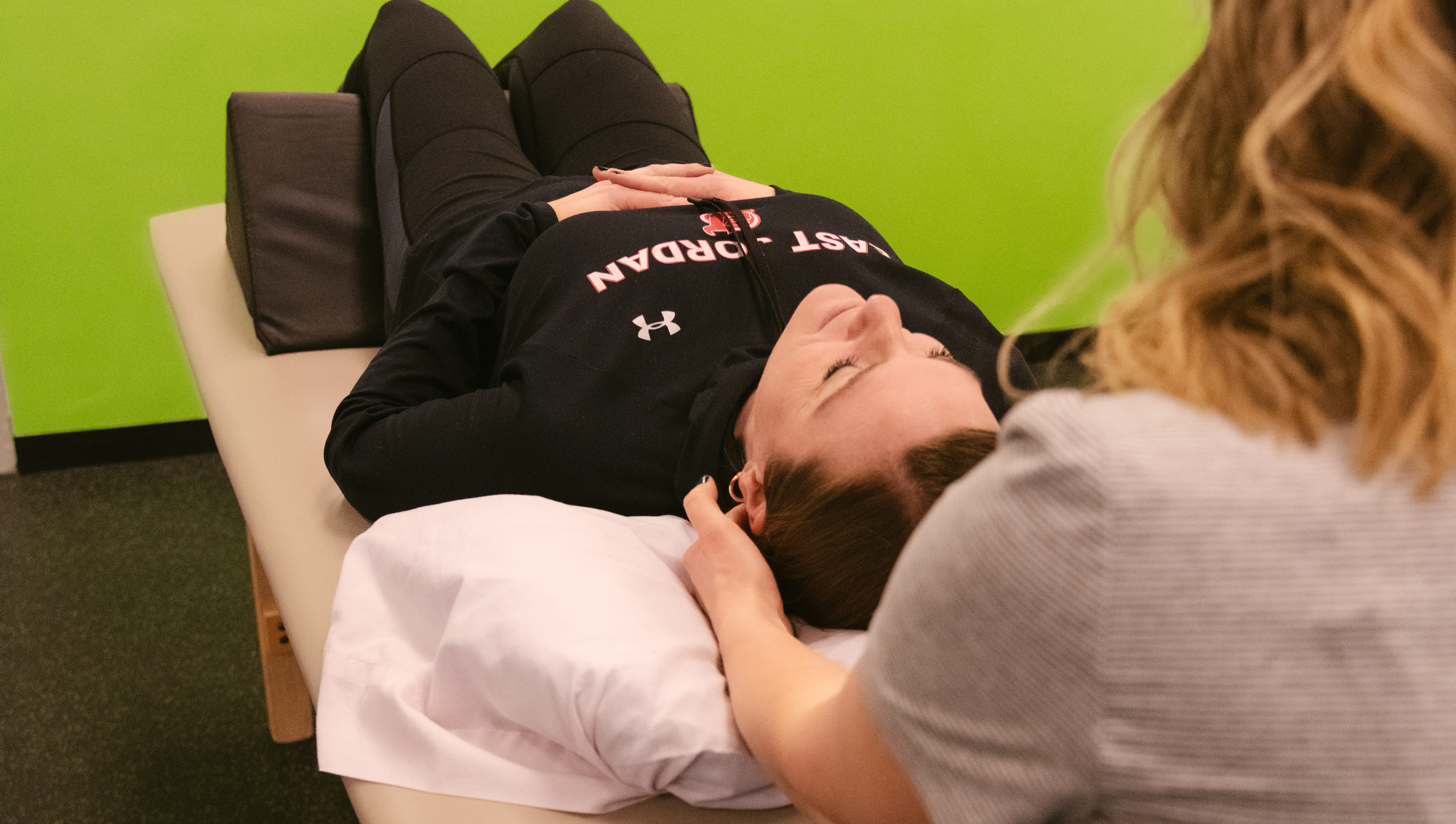
Headaches or Migraines
Can physical therapy relieve my headaches or migraines?
You betcha! While there are true migraines, there are a host of other headache types that mimic migraines with the same common symptoms, such as nausea, vomiting, dizziness, or sensitivity to light. These are known as cervicogenic headaches, with their origin in the cervical spine.
A physical therapy evaluation will explore your individual headache patterns, symptoms, and how your upper and lower cervical spine and surrounding musculature are impacting or contributing to your symptoms. Our goal is to decrease the number of headache days you have, to decrease their severity, and to teach you independent strategies for managing and recognizing when your symptoms are on the rise.
Common sources of headaches or migraines:
- Cervical spine or cervicogenic headaches
- Cervical muscle tension
- Concussion or traumatic brain injury
- Osteoarthritis
- Stress
- Trauma, such as a car accident
*Please note, seek emergency medical care if your headache symptoms are new, different, or severe, and accompany unusual or new symptoms, such as double vision or loss of vision, loss of hearing, difficulty speaking, leg or arm weakness, loss of consciousness, falling or difficulty walking, or numbness or tingling.
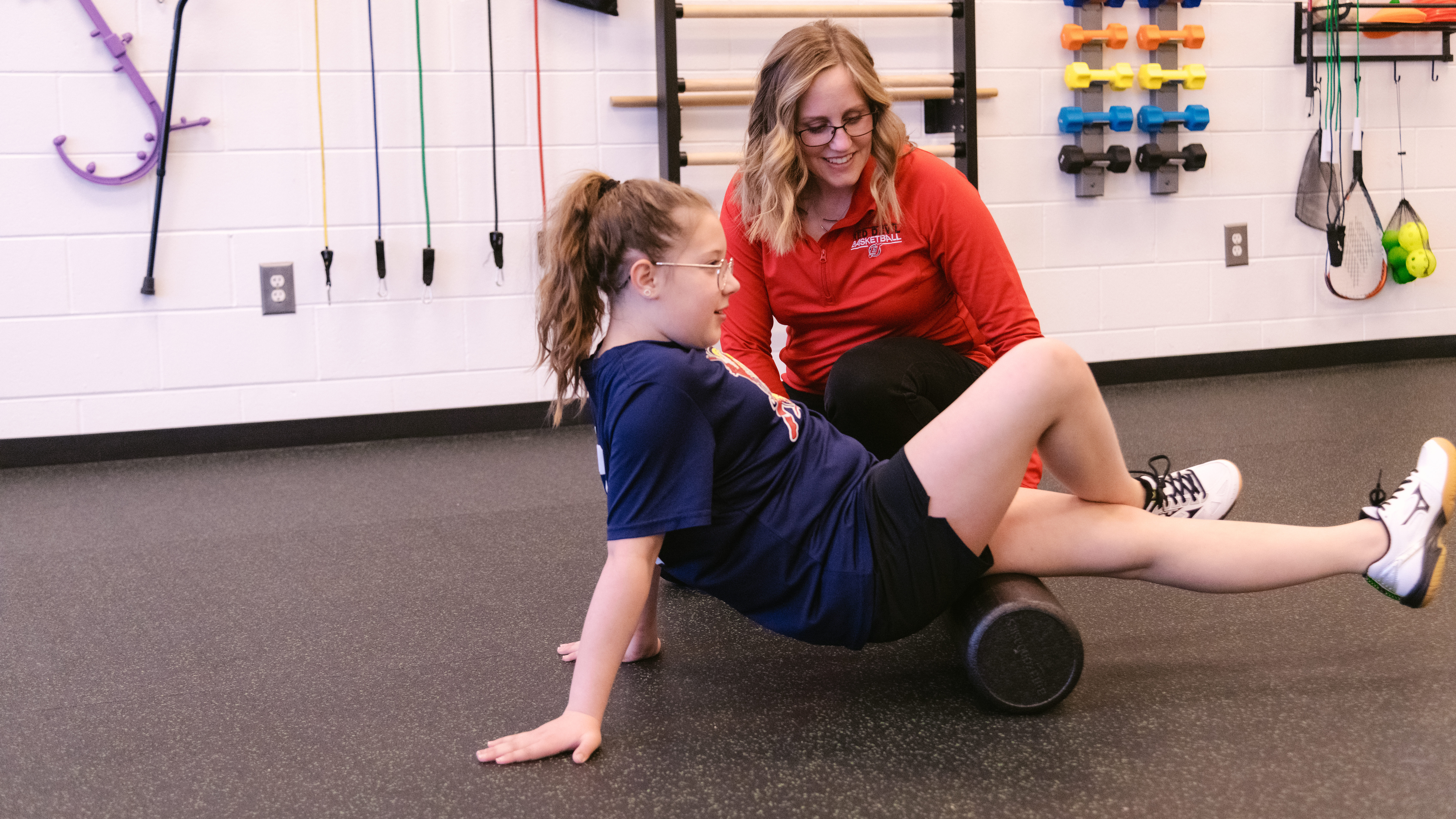
Hip Pain
Why does my hip hurt?
The true cause of your hip pain can be tricky to nail down since dysfunction in your low back, pelvis, and even down to your knees and feet can make their way to the hips. This is because nearly all movements of the body require at least some activation of the muscles across your hip joint. While walking may be an obvious connection, think about the role of your hips in standing at the sink to do dishes or reaching up overhead to put something on a tall shelf…
A thorough physical therapy evaluation will determine which area of the hip is affected and how muscle activation, joint motion, or functional movement impacts your symptoms, narrowing down the true source of your pain. From there, developing a good strengthening, flexibility, and joint mobility program can get you back on track.
Common sources of hip pain:
- Bursitis
- Femoroacetabular impingement (FAI)
- Foot deformity or dysfunction
- Lumbar derangement
- Osteoarthritis
- Piriformis syndrome
- Post-op or orthopedic injury complication due to changes in gait and use of assistive devices
- Pregnancy
- SI joint dysfunction
- Weakness
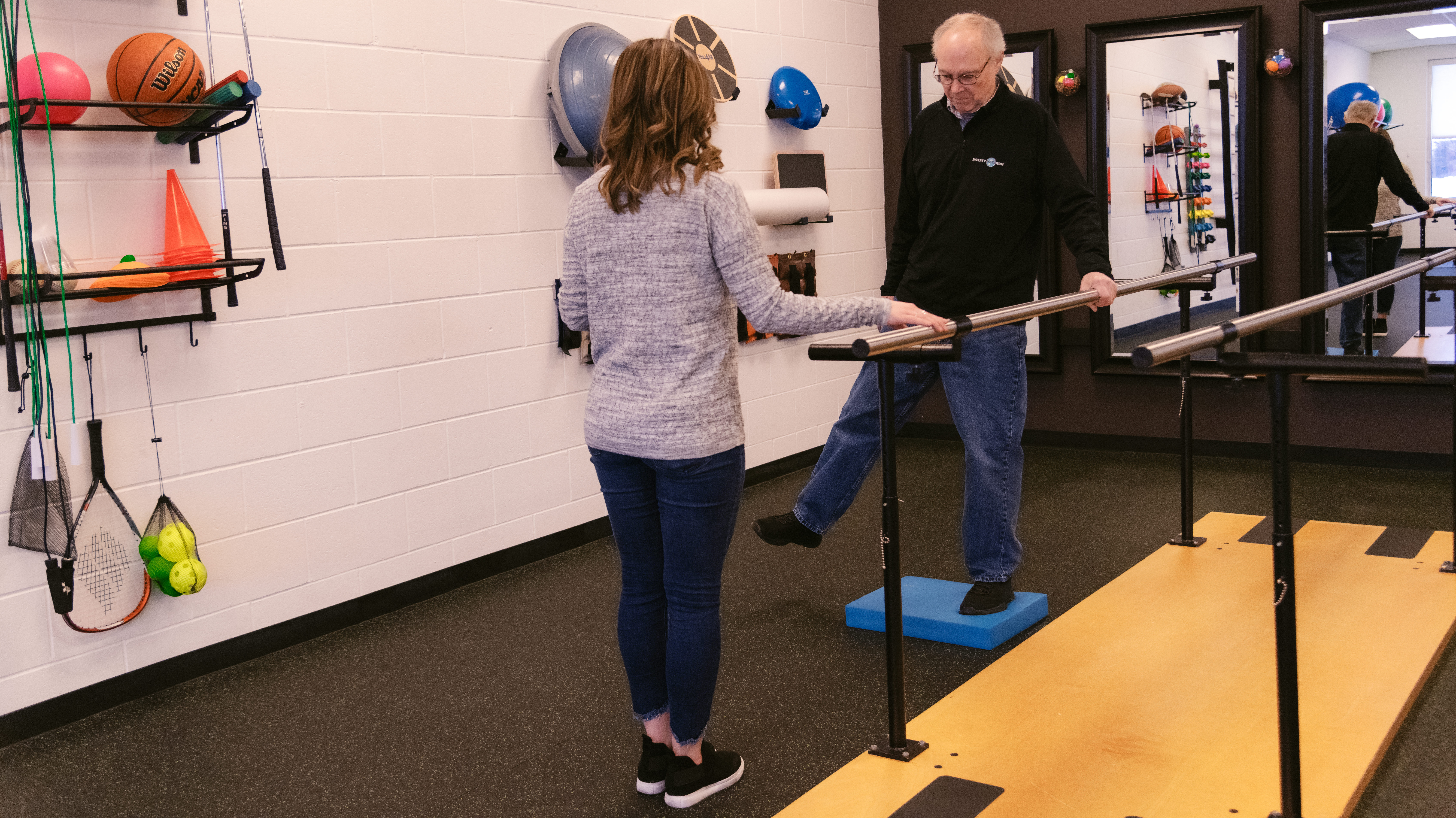
Joint Replacement (or other orthopedic surgery)
What do I do now that I’ve had a joint replacement?
Hopefully, you have a prescription from your surgeon! In most instances, there is a great benefit and even a NEED for follow up with a physical therapist to restore joint mobility, strength, flexibility, and proper mechanics with activities such as walking, running, or lifting. Whether your surgery was the result of an acute injury or a chronic problem, there are going to be some associated weaknesses, loss of motion, and mobility deficits impacting your full return to work, sports, or daily activities that we can help you to overcome.
Depending on the type of surgery you had, you may be under the direction of a specific rehab protocol. Seeking out the guidance of a physical therapist can help to guide you safely and effectively through the protocol, protecting your repair and appropriately challenging you to get you back to full speed as soon as possible.
See a physical therapist after:
- ACL reconstruction
- Ankle fusion
- Knee replacement
- Hip replacement
- Meniscus repair
- Rotator cuff repair
- Spinal fusion
- Total shoulder or reverse total shoulder replacement
- …and much more!
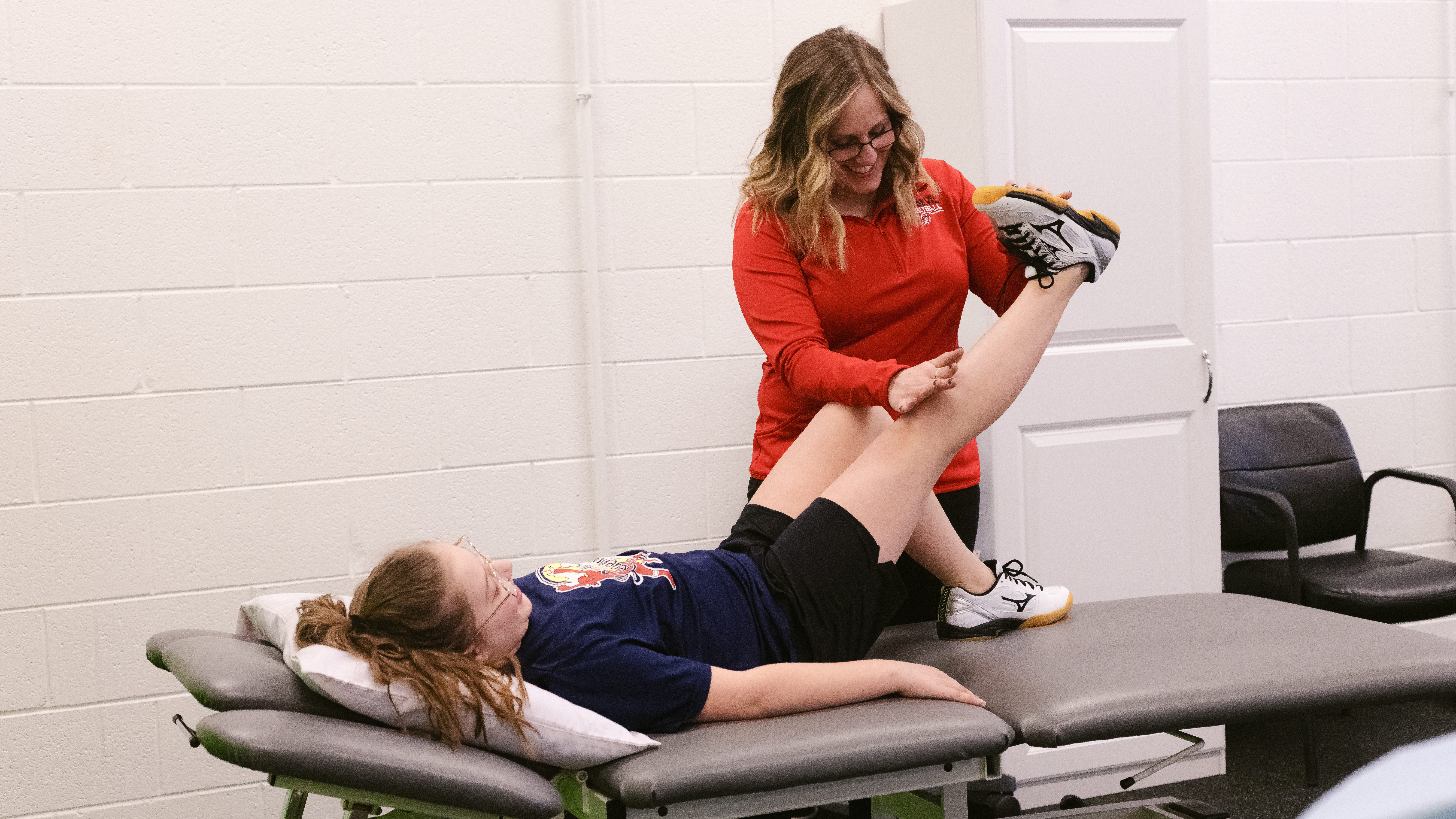
Knee Pain
Why does my knee hurt?
Like the elbow, the knee is a seemingly simple joint that only moves in two directions. And yet, it can cause much trouble, limiting your ability to stand, walk, and even sit for long periods of time. Outside of an acute injury, knee pain can occur in people of all ages, commonly affecting growing youth and aging adults.
The goal of physical therapy would be to identify weakness, tightness, or structural deficits impacting knee function. A variety of interventions, including pain management, bracing or taping, and exercise prescription is helpful in reducing knee pain and restoring function.
Common sources of knee pain:
- ACL or other ligament damage
- Foot deformity or dysfunction
- Meniscus injury
- Osteoarthritis
- Patellofemoral joint pain
- Tendinitis
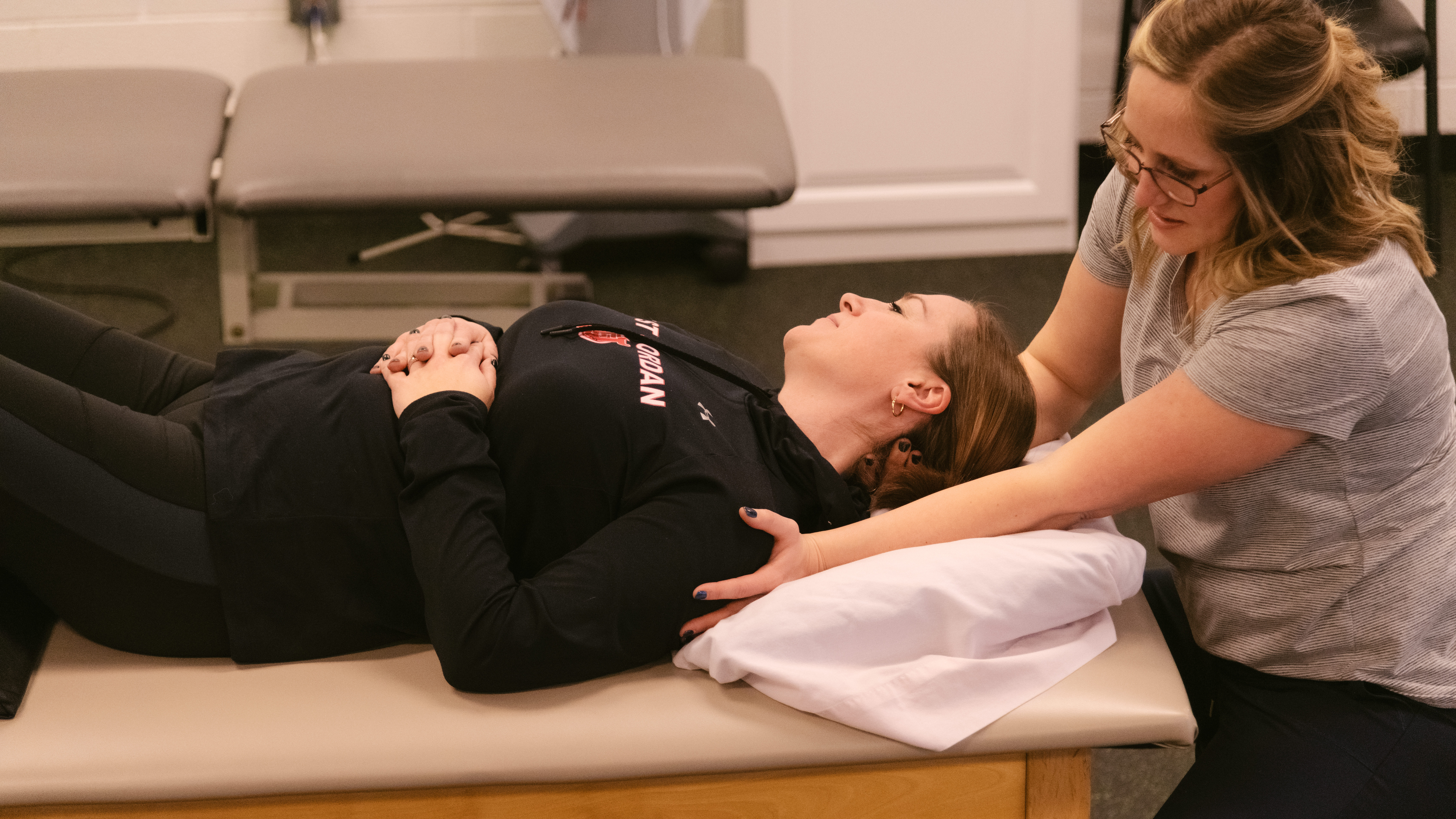
Neck Pain
What’s this pain in my neck?!
From driving, working, reading, and even sleeping, neck pain can affect so many aspects of your life. It’s important to address the causes and contributing factors to your neck pain as soon as possible, as it can lead to increased muscle tension, upper back pain, or headaches. Neck pain can also be associated with numbness, tingling, or weakness in your arms and hands as many nerves originate from this region of the spine.
During a physical therapy evaluation, your therapist will establish what symptoms you have and how they are influenced by neck motion, arm motion, and joint mobility. Identifying areas of dysfunction can help to develop a management and exercise program to restore normal muscle balance, strength, and mobility contributing to your neck pain and associated symptoms.
Common sources of neck pain:
- Disc herniation or degeneration
- Ergonomics or poor posture
- Fracture
- Muscle strain
- Osteoarthritis
- Osteoporosis
- Poor mechanics
- Thoracic outlet syndrome
- Weakness
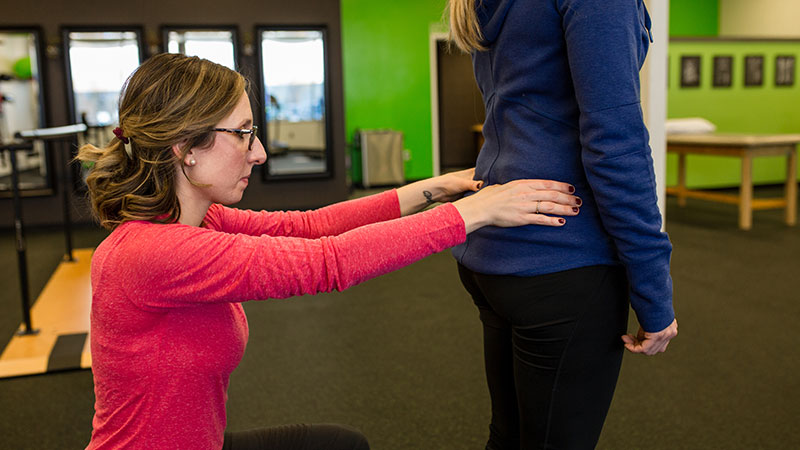
Pelvic Pain
Why does my pelvis hurt?
Your pelvis is an important ring-shaped structure that joins your upper and lower body, supports your trunk, and protects and supports many internal organs. As a whole, the pelvis is a series of very stable joints. Dysfunction occurs due to increases and relative losses in mobility, causing pain and impacting the coordination and strength of the core, back, and leg muscles.
Pelvic pain is common in pregnancy and postpartum stages, but can also occur in association with low back pain, hip pain falls, or weakness. As pelvic pain will likely present in combination with other complaints, such as low back pain, a physical therapy examination will work to determine involved structures and associated muscle weakness or tension.
Common sources of pelvic pain:
- Falls, particularly directly on the tailbone
- Hip and core weakness
- Low back pain
- Osteoarthritis
- Piriformis syndrome
- Pregnancy or postpartum period
- SI joint dysfunction
- Weakness
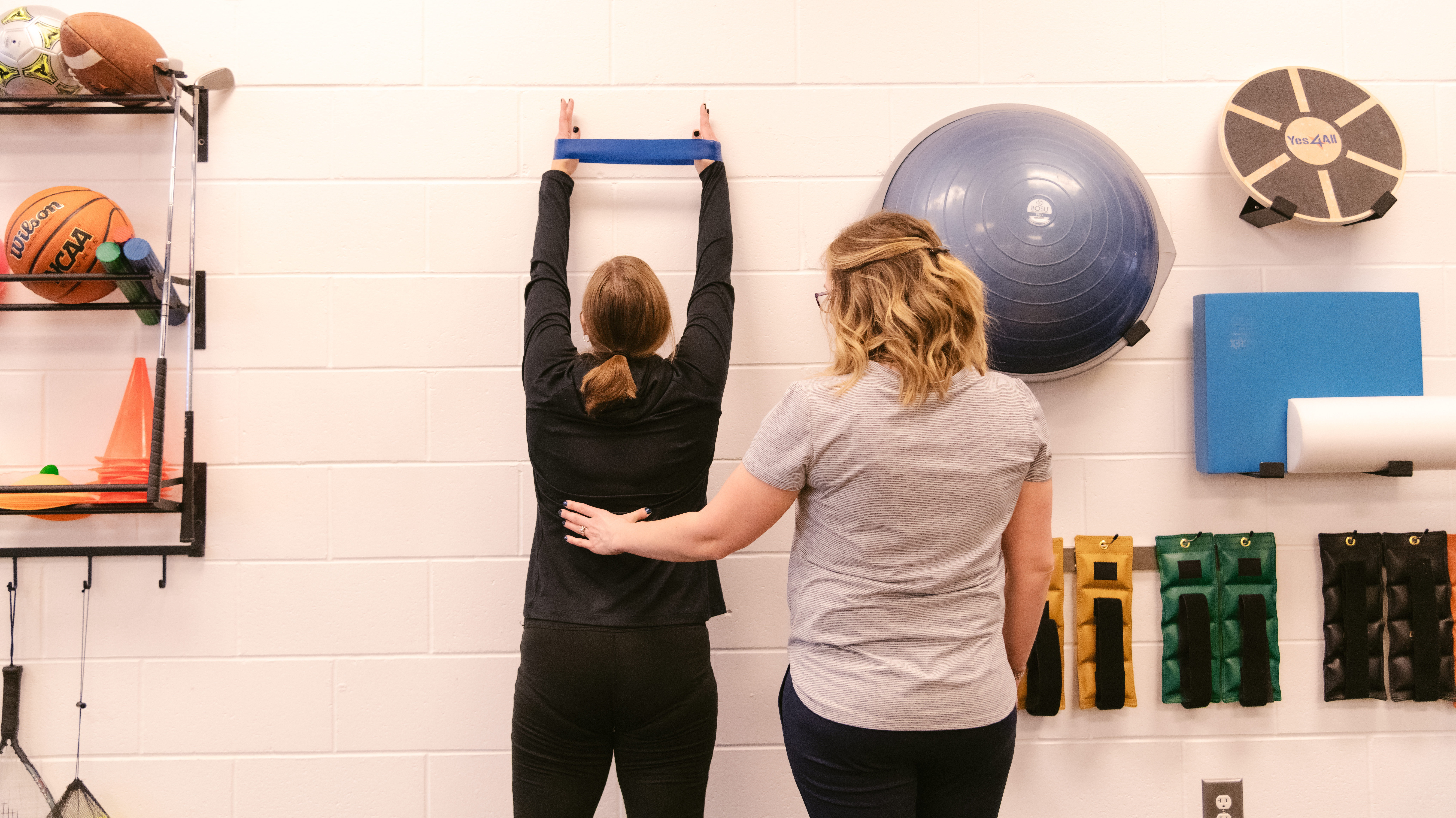
Shoulder Blade Pain
What would cause my shoulder blades to hurt?
Shoulder blade pain can be frustrating, tiring, and debilitating. As time goes on, it can travel up into your shoulders or neck and can even lead to headaches or numbness and tingling into your arms. Just like core strength is important in whole-body activity, your shoulder blades are important in stabilizing and supporting upper body and neck movement. Tension, weakness, and poor movement patterns can set you up for pain and injury stemming from this area.
Addressing the role of the shoulder blades and their surrounding musculature is important in many patient populations, including neck, shoulder, and upper back pain. Injuries or deficits in this region are common to desk workers, factory workers, and athletes. A physical therapy assessment will explore the strength, mobility, and coordination of the muscles surrounding your shoulder blades and thoracic spine (or middle region) and how that is influencing your movement and function.
Common sources of shoulder blade pain:
- Muscle tension
- Poor mechanics or posture
- Repetitive activity or sustained positioning – work or activity related
- Scapular (shoulder blade) weakness or poor coordination
- Thoracic spine hypomobility
- Weakness
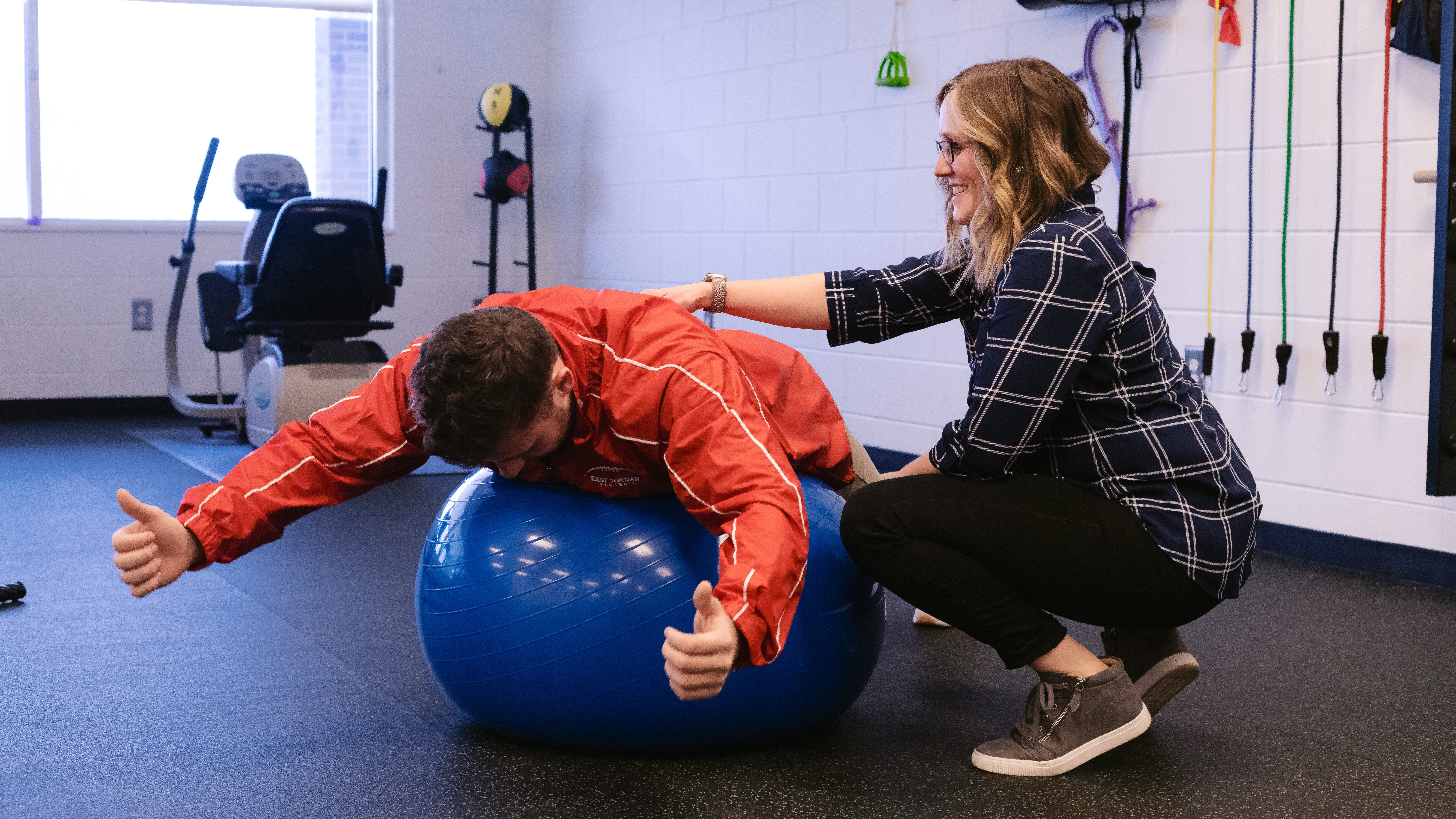
Shoulder Pain
Why does my shoulder hurt?
The shoulder is a complex joint with inherently poor stability as a trade-off for increased mobility. As a result, it relies on soft tissue structures, such as ligaments and muscles, including the rotator cuff to provide both motion and stability. The shoulder complex is susceptible to injury due to the normal wear and tear of aging, repeated motions, and posture. It is also common to experience acute shoulder pain from falls or lifting.
A physical therapy examination is very effective at assessing which structures are involved, the extent of the injury, and the prognosis based on your presentation and response to exercise. Understanding how the shoulder complex works, how to get moving, and how to manage your pain while increasing your strength and mobility are key components of a successful shoulder rehab program.
Common sources of shoulder pain:
- Biceps tendinitis
- Osteoarthritis
- Rotator cuff tear or tendinitis
- Thoracic outlet syndrome
- Weakness and muscle imbalance
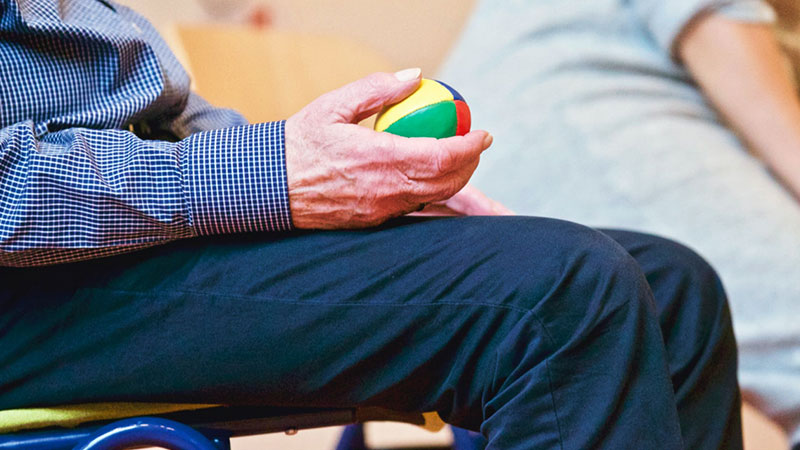
Stroke
I’ve had a stroke, how can Physical Therapy help me in my recovery?
A stroke occurs when the blood supply to part of your brain is interrupted or reduced, preventing brain tissue from getting vital oxygen and nutrients. Brain cells begin to die in minutes and the resulting cell death can lead to permanent changes in function. There is a wide variety in the outcomes of a stroke since the amount and location of cell death is unique to each person.
Depending on the severity of a stroke, a patient may undergo acute and/or inpatient rehab, working to restore some level of gait, balance, and transfer independence allowing a safe return home. Following the initial phase of rehab and transition home, patients may benefit from outpatient physical therapy to continue strengthening, gait, and balance training, and returning to greater independence and activity tolerance.
If you are not continuing to receive speech or occupational therapy services, your therapist will help you to determine if this would be helpful in your rehab process.
Common issues following a stroke that can be improved with physical therapy:
- Balance dysfunction
- Gait dysfunction, including assistive device training
- Increased or decreased muscle tone, including orthotic evaluation
- Strengthening
- Transfer training
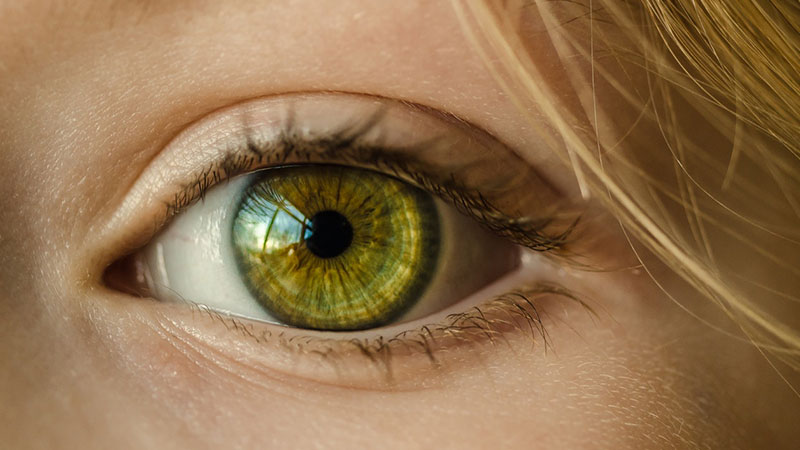
Vertigo
The room is spinning, please make it stop!
We hope that you’ve never suffered from vertigo! The good news is that vertigo can be safely, effectively, and independently managed with physical therapy. Your vestibular system is made up of a series of three semicircular canals that contain fluid, hairlike projections, and crystals. As you move your head, the hairlike projections are influenced by the movement and positioning of the crystals within the fluid.
With injury, aging, or other changes in this system, the crystals can become dislodged. With a movement of your head, the crystals can move into one of the canals, producing a sensation of dizziness, nausea, or vomiting.
A physical therapy evaluation can determine if you have vertigo as a result of changes in these crystals and their positioning. Tests performed in the office can determine which canal is involved and will determine the exercises needed to be performed to promote repositioning and, most importantly, symptom resolution.
Common causes of vertigo:
- Aging
- Head or neck injuries, such as concussion or whiplash
- Medication side effects
- Recent cold, ear infection, or sinus infection
- Traveling
- Upper cervical spine dysfunction
*Please note, seek emergency medical care if your symptoms of vertigo accompany a fever, a new, different, or severe headache, double vision or loss of vision, loss of hearing, difficulty speaking, leg or arm weakness, loss of consciousness, falling or difficulty walking, or numbness or tingling.
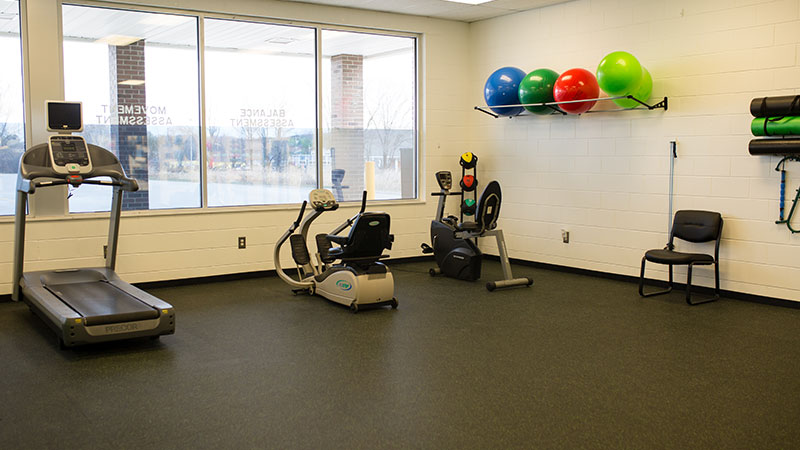
Weight Loss
Can physical therapy help me on my weight loss journey?
Yes! We understand that the barriers to exercise are more than just weight-related. There can be issues with confidence and comfort heading to the gym and there can be a lack of understanding of how and where to even start. In addition to these issues, there is a high incidence of joint pain, fatigue, and poor endurance impacting exercise and activity tolerance. The knowledge and expertise of a physical therapist in regards to activity modification and exercise prescription are crucial in starting and developing an exercise program with your individual goals in mind.
Physical therapists also have unique knowledge of a variety of health conditions commonly associated with obesity and their impacts on safe exercise and weight loss. These conditions may include heart disease, diabetes, or high blood pressure. Particularly in the early phases of your weight loss journey, a health care professional well trained in movement and exercise programming is a great resource to get you on your way safely and effectively.
All of these conditions…
and much more! Don’t see what you’re looking for on this list? There’s a good chance we can help! Contact us today to schedule your physical therapy evaluation.
About Active Recovery
Visit our About Us section to learn more about who we are and why providing health and wellness opportunities to our community is so important to us.
